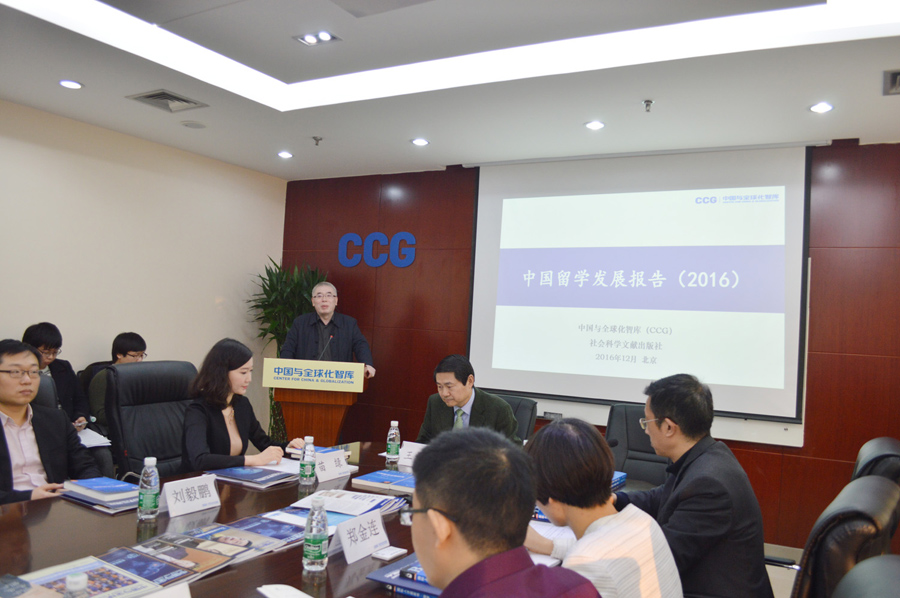CCG’s annual report finds returning overseas Chinese students becoming major force for Innovation and Entrepreneurship
June 05 , 2019
On Dec. 12, the Center for China and Globalization(CCG) launches its 2016 Bluebook Report on Chinese Studying Abroad, which provides latest development of the Chinese students that are still abroad and have already returned China.

The report, jointly published by CCG and the Social Academic Press, is the 5th of its series since 2012. It has been widely acknowledged for its values for research and policy making. According to CCG’s Secretary General Miao Lu, the new report gives equal attention to the international students in China and Chinese students abroad and provides its recommendation how to promote China as a destination for foreign students and to attract overseas Chinese students to return home.
According to the report, the total number of international students is still on the increase, reaching 5 million in 2015, 67% higher than 10 years ago, while the destinations for studying abroad are more diversified. Although North America remains the top choice, still holding 30% of the total, Asian Pacific (including Southeast Asia) and Latin American countries are also rolling out incentives to attract foreign students. Most of the growth came from Asia, especially the students with strength in STEM.
China, as the report states, accounts for 25% of the total international students in the world, with 1.26 million studying abroad in 2015. It is the largest source of international students in the English-speaking countries such as United States, Canada, UK and Australia. However, the growth in the number of the Chinese studying abroad has slowed down since last year, with a year-to-year growth rate of 13.9%, compared to the annual average rate of 18.9% between 2000 and 2015.
Another new development is that the number of Chinese in undergraduates in the United States has surpassed that in graduates. This is in align with the overall trend that more and more young Chinese students have been sent to study abroad. In terms of their choices of schools, Chinese students are found paying more attention to the schools’ reputation and career development services, instead of tuition fee and other spending.
The report also finds out that a increasingly more Chinese students abroad chose to return home after graduation. Three years after graduation, over 60% of those that obtained master degrees abroad are found coming back to China and nearly half of them reside in major municipalities, such as Beijing, Shanghai and Guangzhou. The main reasons for their return are career prospect, higher compensation, and the removal of immigration restriction. However, more than 60% of them are employed as entry-level staff with the salary below their expectation. Facing growing competition in the job market both at home and abroad, the returned Chinese students are still more passionate about starting business, especially in the strategic emerging industries, participating in politics and charity cause than those from home.
The report suggests that the “One Belt, One Road” countries may contribute more growth in the number of international students in China. But more efforts are needed to provide sufficient scholarship and entrepreneurship opportunities, among other incentives, to attract more to study in China.
The writers also call to improve the policy environment and public services to the Chinese studying abroad, helping them become accustomed to foreign environment and comply with the law and regulations in host countries, and strengthening communications with them abroad. In addition, the report proposes six measures to boost innovation and entrepreneurship by returned Chinese students, including providing job application training and removing the barriers for them to become public servants.






